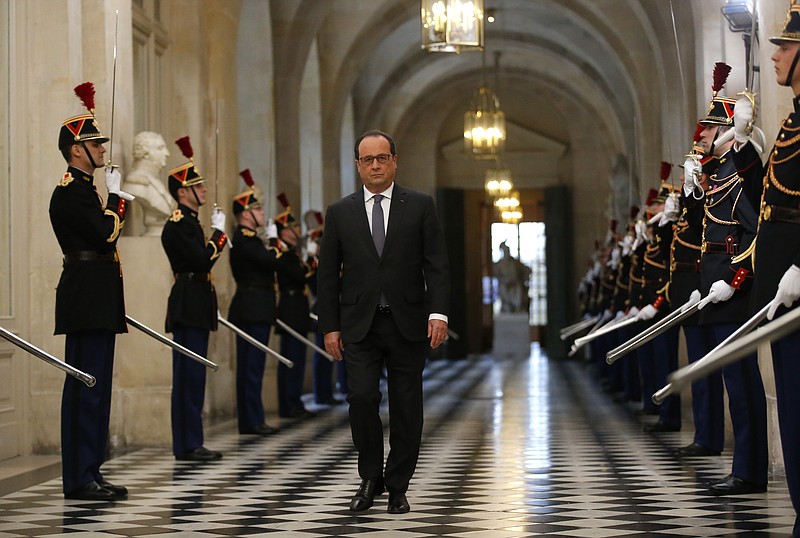WASHINGTON - French President Francois Hollande has announced that his country is at war with the Islamic State, and America is surely part of that conflict, too. What the warfighters need urgently is a road map for the future, after the terrorist group is defeated.
Planning the shape of the post-war Middle East may seem like a fantasy right now, when the extremists are widening their fight. But it's a crucial exercise for the broad coalition fighting the Islamic State, which includes Russia, Iran and most Sunni Arab countries, as well as the U.S., France and most of the rest of Europe.
To guide this strategic planning, it's useful to look at five dates that marked the end of other convulsive conflicts: 1648, 1815, 1919, 1945 and 1989. Four of them created durable new frameworks that addressed the causes of instability. One, however, set in motion the disaster of the modern Middle East. Let's quickly review these five peace agreements. In each, there's a lesson for today:
* The Peace of Westphalia in 1648 is probably better known than the obscure conflicts it resolved, which are collectively described as the Thirty Years' War. Many analysts have likened this Catholic-Protestant fratricide in Europe to the Sunni-Shiite sectarian inferno in the Middle East.
The Westphalia settlement went to the heart of Europe's disorder by creating a system for sovereignty in which each ruler could determine the established religion of his state. By embracing the idea of noninterference in others' affairs, the treaty is often thought to mark the creation of the modern nation-state.
Westphalia embodied mutual respect and self-determination - two ideas the modern Middle East badly needs.
* The 1815 Congress of Vienna rebalanced Europe after the upheaval that followed the French Revolution and the Napoleonic Wars. Henry Kissinger explained the essence of the diplomatic breakthrough in his doctoral dissertation, published in 1954 as "A World Restored." The agreement brought stability by reconciling the interests of the rising powers of 1815, such as post-revolutionary France and an expanding Prussia, with those of the status-quo powers, Britain and Austria-Hungary.
Today's Middle East needs a similar structure that balances the interests of the status-quo monarchy in Saudi Arabia and those of a still-radical Iran.
* The 1919 Treaty of Versailles ended World War I, but it arguably created the torment of the modern Middle East. The victorious colonial powers, Britain and France, carved up the former Ottoman Empire along the boundaries they had sketched in the 1916 Sykes-Picot agreement. The new nations of Syria, Iraq and Lebanon were a patchwork of different religions and ethnic groups. The colonialists administered this jumble through "divide and rule" tactics, but the boundaries created a perpetually messy (and repressive) era, post-independence.
The lesson for today: If the 1919 boundaries survive, they should serve as borders for decentralized, federal states.
* If today's strategists are truly ambitious, they should look at how America shaped the 1945 peace agreements that ended World War II. The U.S. began planning in 1944, when eventual German and Japanese defeat looked likely. By the time the war ended, the foundations had been laid for the United Nations, the World Bank and the International Monetary Fund.
The coalition fighting the Islamic State should be similarly farsighted. Their goal should be a structure for modern governance and economic development that can stop the rot in the Middle East.
* The last pact worth pondering, as we think about what would replace the Islamic State, is the Taif Agreement of 1989 that ended the 14-year Lebanese civil war. Taif created a balance of power among Lebanon's warring sects - "no victor, no vanquished" was the guiding principle. Shiites got more power, Christians maintained their overrepresentation. An Arab force (unfortunately run until 2005 by Syria) maintained order. The structure proved surprisingly stable.
The battle against the Islamic State offers an opportunity to fix what has been broken for nearly a century. The coalition needs drones and fighter jets, but it should also consult some history books.
Washington Post Writers Group

